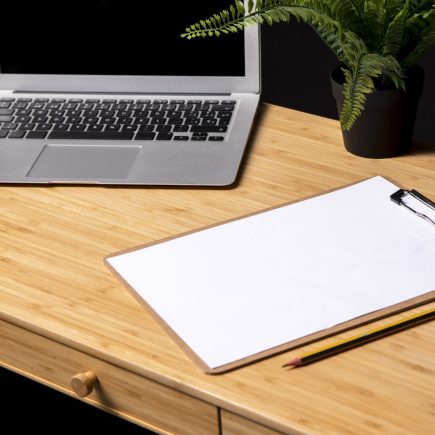
Patio furniture is an essential part of creating a beautiful, inviting outdoor space. Whether you’re hosting a summer barbecue or simply relaxing under the shade, your patio furniture plays a significant role in making the environment comfortable. However, tree sap, while part of the natural beauty of outdoor spaces, can quickly become a frustrating nuisance. If left untreated, sap can damage finishes, discolor surfaces, and even attract dirt and debris, leaving behind unsightly stains. This article will explain how to remove sap from different types of patio furniture and help maintain its longevity, keeping your outdoor furniture looking fresh year-round.
Types of Outdoor Furniture Affected by Sap
Tree sap can affect various types of patio furniture differently. Understanding how sap interacts with different materials will help you decide the most suitable cleaning method. Here’s a breakdown of how sap impacts different furniture materials:
- Metal Furniture (Aluminum, Steel): Sap can cause staining and discoloration. Over time, if not cleaned properly, sap can also weaken or damage painted finishes.
- Wood Furniture (Teak, Cedar, Pine): Sap can seep deep into the wood, resulting in discoloration, warping, or weakening the material. Wood requires a delicate cleaning process to avoid permanent damage.
- Plastic Furniture (Resin, PVC): Plastic furniture can become sticky and uncomfortable to touch, and the sap can leave stains.
- Rattan and Wicker Furniture: These delicate materials can get damaged if sap hardens within the woven strands, causing the fibers to warp or break.
- Fabric Furniture (Cushions, Umbrellas): Fabric surfaces are prone to sap stains, and if not cleaned promptly, the sap can cause fabric to degrade and become more difficult to clean over time.
Knowing how sap affects your furniture type is essential for choosing the right removal method.
Materials You Will Need for Sap Removal
Before you start removing sap, make sure you have all the necessary materials. These tools and substances are easy to find and help ensure a smooth cleaning process:

- Rubbing Alcohol: Breaks down sap and works especially well on metal surfaces.
- Dish Soap and Warm Water: A gentle yet effective solution for fresh sap stains.
- Baking Soda: When mixed with water, it acts as a mild abrasive to lift stubborn sap stains.
- Vinegar: A natural cleaner that helps dissolve hardened sap without damaging surfaces.
- Soft Cloths and Sponges: Essential for applying cleaning solutions and wiping off sap without causing damage.
- Plastic Scraper or Old Credit Card: Used for gently lifting sap without scratching or damaging the surface.
- Commercial Sap Removers (Optional): Available for particularly stubborn stains that won’t come off with household products.
Gathering all these materials beforehand ensures that you are fully prepared to tackle sap removal.
Step-by-Step Guide for Removing Sap from Patio Furniture
Now, let’s walk through the process of removing sap from your Patio Furniture, ensuring you have the best results whether your furniture is made of metal, wood, plastic, or fabric.
Step 1: Scrape Off Excess Sap

- Use a plastic scraper or old credit card to gently scrape off as much excess sap as possible.
- For hardened sap, freeze it with an ice pack to make it brittle and easier to remove.
- Be careful not to spread the sap while scraping.
Step 2: Warm Soapy Water for Light Stains
- Mix a few drops of dish soap into warm water.
- Soak a soft cloth or sponge in the solution and gently scrub the affected areas in circular motions.
- Rinse with clean water, and dry the furniture with a towel to avoid water spots.
Step 3: Applying Rubbing Alcohol for Tougher Stains

- Damp a clean cloth with rubbing alcohol and dab it onto the sap stain.
- Let the alcohol sit for a few minutes to help break down the sap.
- Test it on a hidden area of the furniture first to check for discoloration.
- Wipe the softened sap away and repeat if necessary.
Step 4: Using White Vinegar for Stubborn, Dried Sap
- Pour undiluted white vinegar onto the hardened sap and let it sit for 10-15 minutes.
- Scrub the area with a soft cloth or sponge, and the sap should come off easily.
- Rinse with clean water and allow the furniture to air dry.
Step 5: Baking Soda Paste for Persistent Stains
- Mix baking soda with water to form a thick paste.
- Apply the paste to the stubborn sap stain and let it sit for 10-15 minutes.
- Gently scrub with a soft-bristled brush or sponge, being careful not to damage the surface.
- Rinse thoroughly with clean water and allow the furniture to dry.
Step 6: Use Commercial Sap Removers

- Spray a small amount of sap remover directly onto the sap and let it sit for 5 minutes.
- Wipe the sap away with a clean cloth, and repeat the process if necessary.
- Always test these products on a hidden area first to avoid damage.
Aftercare and Drying Tips
- Once you’ve successfully removed the sap, it’s crucial to rinse the furniture thoroughly with clean water to remove any remaining cleaning solution or chemical residue. This step ensures that no harsh chemicals are left behind that could harm the furniture.
- After rinsing, dry the furniture completely with a towel to prevent any water spots. For metal furniture, you may want to apply a light coat of car wax after the furniture has dried. Car wax provides a polished finish and creates a protective layer that makes it easier to remove sap in the future.
Preventive Measures to Avoid Sap Build-Up in the Future
While removing sap is possible, preventing it from accumulating in the first place is even better. Here are some helpful tips to avoid sap buildup on your furniture:
1. Move Furniture Away from Trees
Position your furniture away from trees that produce sap. If possible, avoid placing furniture under overhanging branches.
2. Use Furniture Covers
When your furniture isn’t in use, cover it with protective furniture covers. This will shield it from sap, bird droppings, and other debris.
3. Regular Cleaning
Clean your furniture regularly, even when sap is not visible. Early removal of any sap prevents it from hardening and becoming difficult to clean.
Removing sap from Patio Furniture is simple with the right tools and quick action. Household items like rubbing alcohol, vinegar, and baking soda can effectively clean most surfaces.With a bit of care, your patio furniture will stay clean, comfortable, and ready to enjoy all year round.
FAQs
1. Will hand sanitizer remove tree sap?
Yes. Hand sanitizer with alcohol breaks down tree sap effectively. Apply it to the sap, let it sit briefly, rub gently, then wipe clean.
2. What removes sap from outdoor furniture?
You can remove sap using rubbing alcohol, oil-based cleaners, citrus-based solutions, or mineral spirits. These substances help break down the sticky residue and make it easier to wipe away.
3. Does olive oil remove pine sap from patio furniture?
Yes. Olive oil can soften pine sap, making it easier to wipe away. After removal, clean the area with soap and water to eliminate oily residue.






















